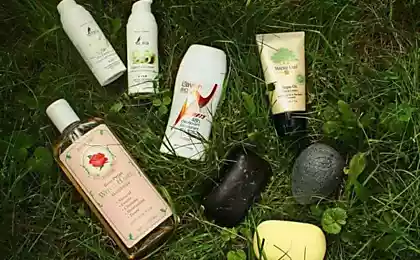438
Sodium lauryl sulfate, aka Sodium Laureth Sulfate, aka SLS: study composition

Sodium lauryl sulfate, aka Sodium Laureth Sulfate, aka SLS is the most common detergent or surfactant (surface active substance). Today's inquisitive consumers, this phrase at the hearing and in the black list, so to speak. Even without delving into the essence, the most eco followers at least know this word in composition of cosmetic or household remedies should not be. What is SLS and what is the substance syscal yourself this "glory"? Sodium lauryl sulfate as a very cheap surfactant, included in most cleansing formulas, including, toothpastes, shampoos, as it provides effective foam. Some studies suggest that the irritant effect of SLS on the region of the eyes and skin, especially sensitive, young and prone to inflammatory elements. It can seriously worsen skin problems in patients with atopic dermatitis. Irritant effect of SLS is directly proportional to its concentration in the composition. Therefore, responsible manufacturers introduced it in the composition in a minimum concentration (to 3%) and only in rinse-off products.
It is important to understand that the SLS can be done in completely different ways and from different raw materials: using high percentage of chemicals, reaction with corrosive acids and can be obtained in a gentle way from vegetable raw materials. And this greatly affects the quality of the final product. The main method of synthesis is the sulfation of lauryl alcohol. So he lauryl alcohol can be made from the oil of coconut or palm oil. But natural vegetable oil as many times modificeres in the manufacturing process, SLS becomes a very distant synthetic "relative".
Despite terrible reviews Sodium Lauryl Sulfate, is a substance, approved for use by ECOCERT organic standard, provided that the resulting gentle manner of plant material and the final product is completely biodegradable. And the origin of substances should be clearly marked – natural oils and it is marked in the document INCI (International nomenclature of cosmetic ingredients).
The sodium Laureth sulfate (aka Sodium Laureth Sulfate, aka SLES) – an ingredient similar in properties to the SLS (ether added chain). Still cheaper than SLS and, adding salt, produces a lot of foam and creates the illusion of thick, concentrated and expensive funds. Scientists have found traces of dioxin (1,4-dioxane) in some products with SLES that suggests its reaction with other components. The U.S. Agency Environmental Protection Agency recognizes 1,4-dioxane, potentially carcinogenic. SLES is not approved for use by ECOCERT standard.
Thus, the main advice when using tools with sodium lauryl sulfate (SLS), is: do not use products with SLS, designed for prolonged skin contact. But also remember that people suffering from acne, dermatitis, dry skin and hair loss want to refrain from consuming products containing this ingredient.
Bionics completely abandons SLS SLES and petrochemical in origin, and chooses products that contain the other more gentle surfactants. In organic cosmetics are used alternative ingredients that are safer for the body:
- Cocamidopropyl betaine (derived from fatty acids of coconut oil and substances contained in the beets)
- Cocoyl monosodium glutamate (produced on the basis of amino acid)
- Sodium lauryl sulfoacetate (made from coconut and palm oil)
- Glycosides coconut (made from the dried flesh of the coconut and fruit sugar)
- Oleate glyceryl/citrate/lactate/linoleate (made from the fruit of palm tree, coconuts and sunflower seeds)
- Lauryl glucoside (derived from sugar and coconut oil)
- Laurylsarcosine sodium (derived from natural amino acids contained in vegetables and fruits) published
Source: www.bionicamarket.ru/blog/view/33
The dawn of electric vehicles: XIX century
The technique of progressive muscle relaxation according to Jacobson























